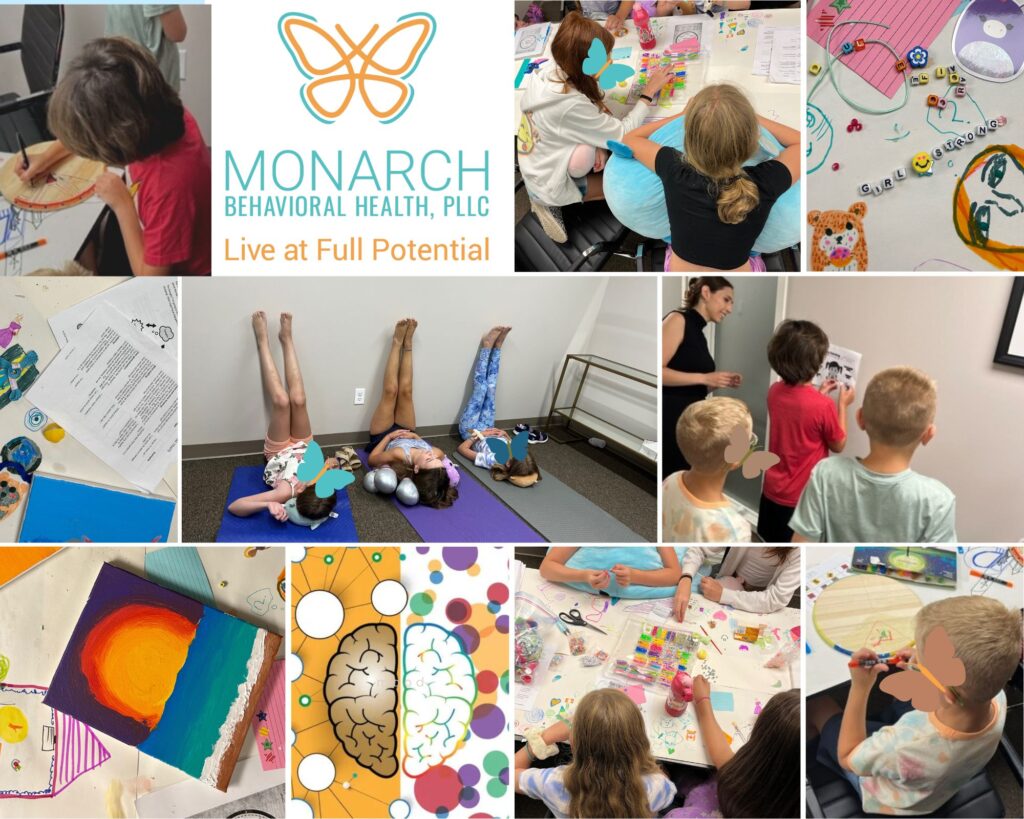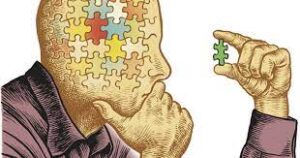Anxiety Resource Guide




As the leaves start to fall, so too can our mood. Despite the increase in demands from work and school, we don’t have to let Autumn Anxiety take hold. Let’s work together in small and creative ways to hang on to the resilience and mental wellness we cultivated, so that our inner summer shines through the fall and into winter.
The busy bustle of fall threatens to push us into anxiety. But each day this season brings us a bit of change and we can use this to stay present focused. When we notice a change, we can stay in the present and not get swept up by anxiety or expectations about the future and all there is to do. Take a moment to do a mindfulness sensory exercise. Take 30 seconds to fully concentrate on one sensory experience of fall. Will it be the crisp air, changing colors of leaves, the taste of cider donuts? Fully exist and experience this moment; notice your heart rate drop and your mind clear.
Moving into fall often means significant change and transitions. School starts, workloads often increase, schedules change, routines are structured differently; it’s a lot all at once. When we have to hold more in our minds and coordinate more, stress, anxiety and low mood can creep in. But what if we invest time in creating better support for ourselves? Executive Functioning strategies can be a game changer in reducing stress. Also, what if we shift some of this burden to others, enabling them to function more independently?
What tasks are burdening you that others could be doing? Imagine NOT doing those things 30 days from now. If you find you are carrying a heavy mental load of others’ executive functioning (i.e. organizing, planning, gathering supplies/materials, strategizing, scheduling), it’s time to shift. We serve ourselves best by putting systems into place that increase others’ engagement and independence. While the initial planning and setting up of expectations or supports does take some time, and we have to be ok with mistakes and mess ups, the pay-off is beautiful and long-term. Setting up sustainable structures like visual schedules, laminated/reusable check lists, and nightly preparation routines can shift the executive functioning load. If you’re struggling to know where to start, MBH therapists can help identify how to shift these burdens and alleviate stress for the long haul.
Of all the health-related behaviors that affect our metal wellness positively, movement is at the top of the list. While we might be tempted to shift into sweater-ready, pumpkin spiced shut-ins, getting out and moving our bodies in the fall will stretch the resilience you built in the summer over into fall and winter. To keep yourself motivated and interested, what activities can you think of that you can only do in the fall? Are there certain outdoor markets that are fun to walk around? Hikes that are particularly beautiful in the fall?
As always, if you feel your mood shifting and Autumn Anxiety building, shoot us a text or give us a call. We can help you learn and practice mindfulness, shift the executive functioning load, and find creative ways to move through the season.
Dr. Jessica, Anastasia and Rachel did an amazing job teaching our campers empowerment and social skills. Our campers were engaged, exited and energetic! It was so fun to see our staff work with your kids to integrate their creativity and kindness with Cognitive Behavioral Therapy and Mindfulness skill building.
If you missed out, or your camper needs any reminders, our skill building infographics are below:

Super Social Summer Boys Group Infographic

In the immediate aftermath of tragedy there are ways we can support ourselves and our loved ones to reduce distress and build resilience and coping. The complex physical, emotional, and behavioral aftershocks of trauma can hit immediately after an event, or occur over time in what can feel like surprising waves of reactions.
Please see below for resources on coping with tragedy and trauma. And as always, please reach out if you or a loved one needs support.
Contact MBH Now:
https://www.apa.org/topics/trauma/stress
https://www.nami.org/Blogs/NAMI-Blog/October-2020/7-Tools-for-Managing-Traumatic-Stress
https://helpcenter.stanford.edu/resources/work-related-resources/coping-traumatic-stress



The holidays are here and for many people that means that they are feeling higher levels of stress than usual. In a survey published by the American Psychological Society, 61% of respondents reported that the holidays were a significantly stressful time for them. One of the most challenging holiday stressors is managing our relationships this time of year. But why can our relationships with friends and family be so challenging during the holiday season and what can we can do to ease this stress?
First, it can be difficult to meet the expectations that people in our lives have regarding the holidays. Our family, friends or significant others may want us to attend a certain get together or buy a particular gift. We may end up feeling like we disappointed them if we are unable to anticipate or meet these expectations. We also often set very high expectations ourselves, leading to stress and relationship conflict. Second, the heightened pressure of the holidays can worsen already existing relationship stressors. The patterns and dynamics with people that you struggle to get along with during the rest of the year may be much more pronounced during the holidays. Third, the holidays often remind family members of loved ones who they have lost. This contributes to an emotionally charged environment that can be difficult to navigate while we are busy with a hectic holiday schedule. The good news is that there are some things that we can all do to better manage relationships during the holidays:
You have the opportunity to align your expectations with your situation and clearly communicate. Unspoken expectations are often unmet expectations. Be clear about what you want and ask others directly what they want. However, it is also important to remind yourself that holiday stress is often related to unrealistic expectations that nobody can live up to. Do not take on the responsibility of creating an ideal holiday experience for your family, friends and/or partner. Everything is not going to go perfectly, and you must remind yourself that perfectionism steals opportunities for connection and joy.
A lot of interactions this time of year aren’t really under our control, and this can cause increased stress. However, we can contribute to creating a healthier and less stressful environment for the holidays. You can choose what you focus on, what your emotional reactions are, and how you respond to others. This time of year, it reduces stress to focus your energy on finding even small things that grow gratitude. In stressful relationships, you can search for what you might have in common, instead of differences that drive you apart. We also often have to practice more ‘letting go’ and acceptance at the holidays than is typical. Giving up control and practicing radical acceptance can actually help you cultivate healthier interactions. You can, however, influence others’ behaviors and interactions with how you choose to regulate your emotions and respond. You can also consider asking everyone at a holiday gathering to share something that they are grateful for. Research tells us that expressing gratitude is correlated with improved stress management and reduced conflict.
‘Tis the season for holiday treats, drinks, stuffed stockings late nights and latkes. While this can fill us up with joy, this deviation from our typical routines can also take a physical and mental toll. It is important to remember that we cannot be at our best for family and friends if we are not attending to our own psychological and physiological needs. Take time to exercise, meditate, or engage in other stress management techniques. When we are juggling busy holiday schedules it can be easy to overlook the basics, like drinking enough water and getting adequate sleep. Make sure that you attend to your emotional and physical needs so that you can enjoy your holiday time with the people that are important to you.
Whether you’ve lost someone recently or are grieving a lost relationship, making space and time for grief is important during the holidays. This space allows us to recognize and validate the experience and not let it overshadow opportunities for joy and connection. Take time to purposefully commemorate and honor your loss and find moments to connect with others around this loss.
Reach out; the people around us often do not realize that we are struggling. Identify a family member or friend that you can talk to when you are feeling stressed. They may be going through a similar experience, and you can support each other. Research shows that when people are feeling stressed, they often feel isolated, and this makes the situation worse. Reach out and let someone know that you are feeling stressed. And of course, give us a call –we are here for you and want you to have a great holiday season.



Currently, men are experiencing mental health distress at alarmingly high rates. This distress may look different than stereotypical anxiety or depression, but causes just as much disruption in life. Research tells us that men tend to focus distress outward, engaging in externalizing behaviors such as initiating more relationship conflict, throwing themselves into work, using alcohol or other substances, and/or increasing time spent on ‘escape’ type activities such as video games. Despite how disruptive these behaviors might be to their lives, men are far less likely than others to seek help. One of the main reasons is due to the stigma associated with seeking mental health services. Though there has been notable progress in reducing the stigma of seeking mental health services in recent years, there is still much work to be done.
On average boys receive less social emotional coaching as compared to girls. Throughout childhood, adolescence, and into manhood, men receive messages that often inhibit and even punish genuine emotional expression and help seeking. This creates significant barriers to acknowledging distress and seeking effective help. In fact, we know men are currently suffering from high rates of anxiety and depression. In a 2021 survey, 82% of U.S. men ages 25-45 reported moderate to severe feelings of stress, 73% reported symptoms of anxiety, and over 61% reported symptoms of depression. Given that the last several years have increased most individual’s stress, and mental health distress is at an all time high, we must battle the stereotypes that keep men from getting effective care.
A research article published earlier this year in the American Journal of Men’s Health addresses this important topic. The authors reviewed published research from the past decade on the stigma surrounding men’s mental health. They reported that a consistent finding was that men frequently internalize a stereotyped male identity that assumes that being a man means being strong, self-reliant, and healthy. Internalizing means that men often self-identify with and judge themselves against these ‘standards’. These same stereotypes view men with mental health issues as being weak, inadequate, and unmanly. These stereotypes contribute to stigma that creates a barrier for men to access and engage in mental health treatment.
The good news is that all men can play a valuable role in reducing this stigma. The authors describe three promising strategies to pursue.
First, the role of peer support is vital. Men who experience mental health issues can serve as important sources of support for other men who need services. Setting up formal peer support networks are one way that organizations and communities can encourage and facilitate these connections. However, on a more personal level, informing your friends, dad, uncles, neighbors and coworkers that you are experiencing mental health distress and are seeking out mental health support can also facilitate peer support. Sharing your experiences draws these peer support networks together and more men in your life are likely to seek the support they deserve.
Second, mental health literacy can be improved by creating opportunities for men to have interactions with mental health professionals that include positive messaging. Consider inviting a mental health professional to deliver a presentation to your company, church, or social group. If you have engaged in mental health support, share your knowledge of the process and services.
Third, when men seek help for mental health issues we should frame that behavior as strength- based and courageous. Let your sons, brothers, friends, and co-workers know that you support them and view their seeking help as a positive and laudatory action.
Men may be socialized to inhibit emotional expression and may be taught fewer or less varied coping skills while growing up. But this doesn’t have to get in the way of obtaining the services and support they need to experience happiness, security, and growth. With rates of mental health distress so high currently, all men have an important opportunity to reduce stigma and play a positive role in helping more people access the care that they need.



In my last blog post, “Emotions are the Solution, Not the Enemy” I explained the importance of accepting
all emotions, even the most difficult ones, and tuning in to what they might be telling us. In this blog post, I will expand on the mind-body connection and explain how our thoughts impact our emotional experiences and sometimes make us feel worse than we need to. Just like emotions are our constant companions, our thoughts are also always in our mind, telling us stories about ourselves, others, and the world around us. Sometimes, we discover that our thoughts fall into unhelpful patterns that can trick us into believing something that is not necessarily true. These unhelpful thoughts can trigger difficult emotions and interact with emotions to make us feel worse about situations. By learning how to recognize patterns of unhelpful thinking, we can learn how to explore and manage our thoughts. If we can take a step back from our thoughts, we might be able to look at things from a different view and feel better about ourselves, others, and the world around us.
As human beings, we develop habits and patterns of doing things in our daily lives. Our thoughts tend to
form habitual patterns in the same way! Our brain is built to recognize patterns and themes that help us make connections between new situations and old information/experiences. Recognizing patterns helps us make quicker judgements, predict outcomes, and make informed decisions. For example, this is one way that we determine if a situation seems safe or dangerous, by making connections between the current and past environments/experiences. We learn from our experiences and apply that information to make interpretations and decisions as we approach new situations. Our thought patterns are shaped through our environment, experiences, relationships, and cultural/social beliefs. Thought patterns work as a general framework that impacts and filters the way we tend to think about ourselves, others, and the world. These thought patterns affect the way we interpret situations, which leads into how we feel and what we do about those situations. These patterns can make us habitually interpret situations in a way that causes us to feel badly about ourselves, other people, and the world around us. While some thinking patterns keep us safe, result in healthy relationships, and lead us to make great decisions, others cause us to make incorrect assumptions that negatively impact our feelings, relationships, and decisions. By paying attention to our patterns of thinking, we can learn how to take a step back from our thoughts and try to look at things from a different perspective.
In my last blog post, “Emotions are the Solution, Not the Enemy” I explained that our thoughts, emotions, and behaviors are connected, and all interact with each other. Thoughts and interpretations trigger our brain and body to feel related emotions. Imagine that you are giving a speech that seems to be going well, and you see someone in the room laugh. You might think that the person is making fun of you, which would make you feel embarrassed, anxious, sad, or angry. That thought would trigger those emotions in your brain and body, and you might feel your heart start to beat faster, your face flush red, and butterflies in your stomach. That person may have been laughing at something completely unrelated, but the thought you had in that moment triggered your brain and body to feel uncomfortable emotions. By paying attention to our thoughts and feelings, we can notice how they are connected,and we can recognize when our thoughts may be contributing to our difficult emotions.
An automatic thought is the first thought that pops into our mind. They are super fast and, sometimes, super sneaky because they usually follow our thinking patterns and can heighten unhelpful emotions. Automatic thoughts can also be colored by the emotions we are already feeling. Using the example from above, if you were already feeling nervous about giving the speech, then there was a higher chance that you would have thought that the person laughing was making fun of you. If you are already irritated, your automatic thoughts will fall into anger patterns. If you are feeling socially disconnected… your thoughts will fall into patterns of social anxiety and withdraw. These automatic thoughts can feed into difficult emotions like throwing gasoline on a fire. Automatic thoughts often fall into common patterns of distorted, unhelpful thinking “traps” (also called “cognitive distortions”). Unhelpful, distorted thoughts may not be accurate, or they may be exaggerated, as we assume things without considering all of the possibilities. When we experience automatic thoughts, we often only pay attention to information that makes us believe the thought. As a result, we ignore other information that might show us that the thought is not necessarily true. You can see how this spiral of thought trap, heightened emotion, attending to limited information, and further thought trap can result in intense emotions than can spiral out of control. But, the good news is that we can learn to notice our thoughts and change our thinking patterns. No more unconscious emotional spiraling!
People tend to believe their thoughts and feel that they are ‘correct’ or ‘true’. We often believe the first thought that pops into our mind, and we fail to consider all of the possible explanations of a situation. We only pay attention to the information that fits into our thought pattern, and we miss other information that may tell us something different. By believing our thoughts are always right and true, it gives our emotions full reign to direct our moods, decisions, and interactions. However, if we acknowledge that our thoughts are just our interpretation of a situation or event, based on our life experience, colored by our current emotional state and thinking patterns, then we are free to second guess and even correct our thinking patterns. These thought patterns often fall into easy-to-identify traps.
Below are descriptions of common thinking traps, as well as a related automatic thought that someone might have in response to the following situation: You see your friend walking toward you on the sidewalk. You wave at them, but they don’t wave back. Thought trap: Personalization: Taking things personally when the situation might not have anything to do with you. This can include things like blaming yourself for something that you had no fault in or assuming that someone is purposely doing something to you. Automatic thought: My friend purposely ignored me when I waved at them. Thought trap: Mind reading: Assuming you know what others are thinking or saying about you. Automatic thought: My friend didn’t wave back at me; they must think I’m annoying or weird. They don’t really like me. Mental filtering: Only paying attention to certain information or details in a situation. Automatic thought: They didn’t even wave at me. (failing to notice that they smiled at you instead). Catastrophizing: Assuming the worst possible scenario. Automatic thought: My friend didn’t wave back at me…they must not want to be my friend anymore. Nobody ever wants to be my friend. If you believed any of the unhelpful automatic thoughts in response to your friend not waving back, how would you feel? You would likely feel sad, embarrassed, angry, or anxious. You might then want to ignore them or yell at them. By noticing automatic thoughts and thought traps, we can recognize when our thoughts are causing us to feel unnecessary difficult emotions and act in ways that can hurt ourselves and others.
*Click on this link to see a longer list of common unhelpful thinking patterns/traps:
https://www.animalsamplified.com/thinking-traps/
When we get used to acknowledging our automatic thoughts and identifying thought traps, we can challenge those traps. This enables us to look at all possible sides of a situation, to determine whether certain thoughts are exaggerated or inaccurate, and help us to think in a more balanced way. This is not to say that all of our thoughts are incorrect, but we gain a great deal of power when we can identify ones that are. When we can decide if the thoughts fit into a thinking trap, we can explore and challenge them. We can challenge and reframe unhelpful thoughts guiding our emotions, decisions and relationships to a healthier place. Some general questions you can ask yourself to explore your thoughts and see if there are any steps to take to gain more information: Are there any other ways I can look at this situation or myself? What evidence do I have to support this thought? Am I looking at the situation from all angles? Am I assuming the worst? Am I assuming I know what they are thinking or feeling? What can I do to see if my thought is true? Let’s return to the same example from above. Maybe your friend didn’t see you or maybe they were having a rough day and did not feel like waving at anybody. Maybe they smiled at you instead of waving back, and you didn’t notice them smile so you thought they ignored you. Perhaps if you asked your friend what happened, they would tell you they didn’t see you, they were having a rough day, or they smiled at you instead. After thinking about the different possible explanations or taking action to find out more information about what happened, instead of feeling embarrassed, angry, or sad, you would probably feel much better about the situation. You would see that they didn’t ignore you on purpose and that there was nothing to worry about. Exploring and challenging automatic thoughts can alleviate a lot of anxiety, mood troubles and relationship distress.
Combining the physical coping strategies from our last blog post, “Emotions are the Solution, Not the Enemy” and the thought-related strategies from this blog post can help you calm your body and mind. It can be difficult to think clearly when your body feels so worked up! When your emotions feel strong, it is often helpful to first use the physical relaxation skills to calm your body, and then explore your thoughts to calm your mind. Don’t be discouraged if you find it difficult to practice any of these strategies. It’s important to be patient and compassionate with yourself and keep practicing! Practicing these skills is like building a muscle; the more you use them, the stronger they will get! If you ever feel like your emotions and/or thoughts are becoming too much to handle on your own, don’t be afraid to seek professional help. It takes a very strong person to admit they are struggling and to ask for help, and we are always here for you!



Emotions are our constant companions, ever present and impacting us. We spend a lot of time trying to manage them, push them down, and fence them off. However, emotions are hard-wired in our brains and bodies. This hard-wired system is designed to keep us safe, motivate us, and connect us with others. If we are open to shifting our perspective and accepting that all emotions are useful and important, not just the pleasant ones, we just might be able to accept them, manage them, and hone our ability to use them as a guidance system. If we experience all of our emotions we gain more of what we want and need in life.
Emotions are often labeled as “positive” or “negative.” Most people learn very early in life that emotions like anxiety, sadness, and anger are “bad”, are signs of weakness and/or are to be avoided. We are told that the ‘good’ emotions are the ones we must strive to feel and show to others. However, the perspective that only ‘positive’ emotions are ‘good’ leads to shame and embarrassment, which then lead us to ignore or suppress more difficult emotions. However, this usually makes the feelings and situations worse. What if I told you all emotions are of equal value? Really think about it; consider that your sadness is just as important and valuable as your happiness. How would this perspective change your experiences? We think that in a perfect world, people would feel positive emotions such as happiness, excitement, joy, love, or curiosity all of the time. However, it is the vast experience of emotion, and the contrast between pleasurable and difficult emotions that paint the landscape of our lives. Emotions motivate and guide us through situations, interactions, and decisions. We must have a full range of emotional experience to engage in life. All emotions are equally valuable because they tell us very important information about ourselves, others, and our experiences. We know that many emotions are difficult and painful to deal with, but it is important to allow ourselves to feel all emotions in order to be able to learn from and cope with them. By accepting all of our feelings as equal in value and importance, we can better learn to express and cope with them.
All emotions serve a purpose, and if we understand them as signals, telling us what to be aware of and what to do next, we are much more effective in getting what we want and what we need. What we call emotions are actually a cascade of thoughts, brain reactions, and bodily reactions. First, our brain reacts to a situation, we may or may not have an interpretive thought, and this reaction or thought then result in signals sent to our body. For instance, when we are faced with difficult situations, our brain’s stress-response system sends a signal to our body that something might be wrong, so that we can decide what to do next. If our brain thinks we might be in danger, it sends stress hormones through our body to protect us. These hormones translate directly into bodily reactions. For instance, our heart beats faster to get more blood and oxygen to our body, in case we need to run or fight for our lives. Our breathing also becomes faster as our lungs work to get more oxygen into our body. Our pupils dilate to help us scan our environment better. We label these bodily sensations as emotions, such as nervous or irritated, and we are motivated to act. We might fight, freeze, or run away. When we are feeling sad, our brain signals to our body that we need to rest and recover. This is why we often feel tired and drained when we experience sadness or grief. Paying attention to what we feel in our body can help us understand what our emotions are guiding us to do to meet the demands of a situation. When we are disconnected from our emotions, we are disconnected from solutions.
Emotions are the lens we view the world through; hence the saying, seeing something through ‘rose colored glasses’. The physical aspects of emotions influence our thoughts and behaviors a great deal. This may seem obvious, but often times it’s not so obvious in our daily experiences. When we understand that emotions are interconnected with our bodily sensations, thoughts, motivations and behaviors, we can, in turn, learn how to manage these different experiences of emotions. For instance, when we are angry, we tend to think angry thoughts. Thinking angry thoughts then feeds and fuels our emotion further, and leads us to want to act on our anger. The stronger the emotion, the more intense the motivation, sometimes leading to decisions or actions that don’t work for us, or that we regret. Now here’s were the work comes in! We learn to identify the emotion, increase awareness of bodily sensations, and use this insight to guide us toward what we need. Coping skills can be used to manage the physical feelings and behavior urges that come with intense emotions. We can then effectively explore the thoughts that might be colored by those emotions, and consider what actions best meet our needs or wants. We can’t control how our body reacts or what thoughts initially pop into our heads, but we can control how we look through the lens.
One way of gaining insight and control over emotions is to increase awareness and control of bodily reactions. Although some people are skeptical about breathing and grounding exercises, science shows us that using these strategies can send a signal to the part of the brain that turns down the “stress-response system” (sympathetic nervous system), and turns up the “calm down system” (para-sympathetic nervous system). Active strategies that use your whole body help to regulate stronger bodily responses to emotions, especially frustration and anger. These techniques aim to help you focus on something else, while calming and shifting your bodily responses and sensations.
The 4-7-8 breathing technique: Slowly breathe in through your nose for 4 seconds, hold your breathe for 7 seconds, and breathe out slowly through your mouth for 8 seconds. Repeat this sequence until you feel your body calm down.
Five senses grounding: Acknowledge 5 things you see around you. Acknowledge 4 things you can touch around you. Acknowledge 3 things you hear. Acknowledge 2 things you can smell. Acknowledge 1 thing you can taste.
Move your body! Sometimes, our emotions feel so strong that the calming techniques above are not enough to release that emotional energy. Instead, moving your body around can help release that built up energy. Play one of your favorite fast-paced songs and dance around! Go for a run or bike ride! Kick or throw a ball around! These strategies are meant to help you focus on the activity, while moving your entire body, to release the built up energy that emotions give us.
When we see emotions as equally valuable, we can harness the power of a full range of emotional experiences. These experiences provide us with incredibly important signs and signals, guiding our expression, behaviors, and choices. This leads us to be more effective in getting more of what we want and need. However, to ensure we don’t feel overwhelmed by these experiences, we also must attune to our bodily responses and learn to turn the dial up or down. Stay tuned for more on recognizing and managing thought patterns.
*Click on this link to view a “Feelings Wheel” which can help you identify and express your emotions using different terms that describe different levels of the common emotions humans feel.


As the days draw a bit shorter, the end of summer marks the beginning of a new school year. Children prepare by picking out their new backpacks and wait in anticipation for their room assignments, all while soaking up the last of the summer sun. As parents, we want to send our children out into the new school year feeling prepared, confident, and excited. However, we enter this new school year bringing with us the experiences of managing life during a global pandemic. The changes in routines, family life, and ongoing pandemic continue to affect us all. Your child may be more nervous, anxious, fearful, or unsure compared to years past. Here are 4 ways to help with the new school year jitters.
Start by talking with your child! I know it sounds simple – but it takes purpose and planning to set the time aside and initiate the conversation. Research has shown us that children and youth who discussed the pandemic with their parents were less likely to develop stress, depression, and anxiety symptoms. Many parents try to shelter children from current events, but we know that providing measured and purposeful information helps reduce anxiety. Additionally, children often do not talk about their concerns because of confusion or fear of worrying their loved ones. Encourage them to verbalize their thoughts and feelings about the new school year and let their questions guide you. It’s important to remember that how we discuss COVID can increase or decrease our children’s’ fears. Don’t avoid giving them information that experts say is crucial to their well-being and staying healthy. You should answer your children truthfully and help them develop their expectations for the school year, routines (e.g., masks or no masks, seating at lunch, what will happen at their school if someone gets sick). However, leave out unnecessary details and unknown factors. It’s also ok to say, ‘I don’t know, but we will work together to figure it out.’ This is a great opportunity for modeling calm in the face of ambiguity, as well as collaborative problem solving. You can be a good listener while providing the love and reassurance your child needs.
Before the pandemic, schools were a source of consistency in our children’s lives. For most families, the 20/21 school year included constant changes which disrupted our daily schedules for months on end. Keeping your child on a regular schedule provides a sense of control, calm, well-being, and predictability. We can foster our children’s sense of control this fall by structuring schedules and expectations. First, think about your fall schedule and work with your child to make a daily or weekly calendar. Use blocks of color to represent places of activities to make it as visual as possible. You may think this would only benefit younger children, but we find it very effective with high schoolers and even college aged ‘kids’. You may also build concrete expectations to help your children foster a sense of control in their world. Your children may fear getting sick, quarantining, switching to online learning, or closures. Using language appropriate for their developmental level, describe their school’s new policies and procedures so they feel prepared for structured changes. Be clear about your household and school’s expectations regarding what your child will be doing to prevent COVID spread and infection. Remind them about hand washing and other safety precautions – these efforts to mitigate spread might seem so simple, but they work! Lastly, sit down together and make a list of what is in their control during their day. When children are able to identify what they are in control of, they feel calmer and more confident!
Since the onset of the pandemic, children have increased their screen time and sedentary behaviors. They are sitting more than they ever have before! Engagement in physical activity is particularly important to help reduce anxiety during stressful periods. Research tells us that youth who regularly engage in physical activity report less stress and have an easier time regulating their moods. As kids resume in person school this fall, provide a physical outlet for their difficult feelings. It can take the form of sports teams, walks around the neighborhood, silly obstacle courses in the yard or living room, or simply tossing a ball around. It doesn’t matter how your child chooses to move, as long as they move!
Most youth will manage the transition well with the support of their family, even if they show some symptoms of anxiety. Some youth may be at greater risk of developing mental health challenges and will need more support. If you notice your child has exhibited significant changes in behavior or any of the difficulties listed below, please reach out for more support. Research indicates that kids who receive supports earlier tend to recovery faster and have more stable gains in treatment. Also, if you want general support in providing your child with the skills to succeed and thrive during these extraordinary times, don’t hesitate to reach out. Emotional intelligence and regulation is one of the greatest predictors of positive child outcomes. It’s always a good idea to support mental wellness throughout a child’s development.
Clues that more support is needed:
Elementary Age Children– irritability, aggressiveness, clinginess, nightmares or other sleep disruption, school avoidance, poor concentration, stomach issues/headaches/body aches and pains, and withdrawal from activities and friends.
Adolescents– sleep and eating disturbances, agitation or irritability, increase in conflicts, physical complaints, social withdrawal, poor concentration, and rule breaking/oppositional behavior.
Together we can provide the skills and supports our kids and teens need to feel healthy and confident during these extraordinary times.


Michiganders are headed back to in-person work this week, and while some are feeling a renewed sense of freedom, others are facing significant anxiety. ‘Back to Work Anxiety’, as some are calling it, is part of the larger experience of ‘Re-Entry Anxiety’. We have been expressly avoiding many situations, interactions, and contexts for over a year to keep ourselves, and others, safe. However, when we avoid a feared situation, our perception of danger increases, as does our bodily response to this fear. So now, as we venture out into the world, it is reasonable to feel a little wary, or even downright intense anxiety. The closeness of others, enclosed spaces, people touching things… it might all be a bit overwhelming. It’s imperative to highlight what we can do to manage back to work anxiety and make this transition a bit easier.
Recent Comments